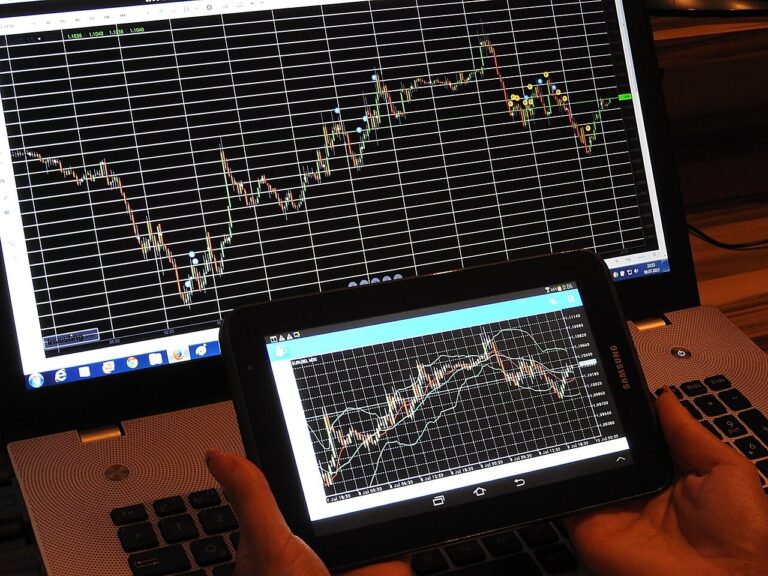How to Build a Winning Trading Portfolio
Know the essential strategies to build a winning trading portfolio with these practical tips on goal setting, risk management, and maintaining discipline for long-term success.
Creating a winning investment portfolio requires thoughtful planning, analysis, and precise execution. As an investor, it is important for you to develop a clear and diversified portfolio to increase potential returns while reducing risks. Everyone aims to succeed in the competitive market, and your strategy plays a key role in achieving this. Creating an effective strategy isn’t easy but it requires careful observation of every market movement. Without a solid strategy, success will be elusive.
Your strategy also helps you manage your emotions. It is vital since emotional decisions in trading can lead to significant losses. When you follow a well-thought-out strategy while opening a new trade, you can navigate the market with logic rather than emotion. It will actually ensure more consistent and rational decision-making.
11 Strategies For Building A Winning Trading Portfolio
Set Your Goal:
Determine what you want to achieve in the market. Some traders focus on trading a specific number of shares within a day, while others aim for long-term success. The long term investors hold onto their trades for an extended period. Also you have to decide whether you prefer quick, daily transactions or if you’re looking to invest over the long period. Knowing your main objective will guide your trading decisions.
Implement Risk Management Strategies:
No investment plan is complete without strategies to manage risk. Markets can be unpredictable, so it is important to protect your investments. You can protect your trade using stop-loss orders. It will automatically sell a position if it drops to a certain price and can help limit your losses. Be cautious with leverage, as it can increase both your profits and your losses. Regularly review and update your risk management strategies to keep up with the market.
Test Your Trading Strategy:
Before diving into real trading, it’s important to see if your strategy works. You can test your plan in a virtual market, where you don’t need to invest actual money. Virtual trading gives you the same experience as real trading because you use simulated money for transactions. If your strategy is successful in the virtual market, you can confidently apply it in the real market. If it’s not working, analyze the issues and make the necessary adjustments.
Combine Fundamental and Technical Analysis:
Successful investing often involves using both fundamental and technical analysis. Fundamental analysis looks at factors like economic indicators and geopolitical events that can influence market trends. Technical analysis, on the other hand, uses charts and patterns to identify potential trading opportunities. By blending these two methods, you can make more informed and balanced investment decisions.
Manage Your Time:
Decide how much time you can dedicate to trading. If you have limited time, day trading might be more suitable. In day trading, trades are completed within the same day. If you can devote more time, then go for swing trading. It involves holding positions for days or weeks, could be a better fit. Remember, you need to invest time in learning about the market to make informed decisions.
Consider Automated Trading Systems:
Automated trading systems, also known as robo-advisors, can help execute trades based on pre-set criteria thereby reducing emotional decision-making. These systems continuously monitor the market and can make trading more efficient. However, it’s important to thoroughly research and test these systems before integrating them into your investment plan.
Learn from Mistakes:
It’s normal to experience losses in trading. What’s important is learning from those mistakes. Avoid repeating errors by reviewing your past trades and understanding where things went wrong. Adjust your strategy based on what you’ve learned and don’t ignore your trading history. It’s a valuable resource for improvement.
Stay Informed and Adapt:
The market is constantly changing, influenced by various factors such as the economic news and geopolitical events. Staying informed about these developments is crucial for making smart investment decisions. Regularly monitor your portfolio and be prepared to adapt your strategies as needed. Flexibility is key to success in trading.
Set Realistic Expectations:
When investing, it’s important to have realistic goals. While high returns are possible, there’s also a significant risk of loss. Avoid making hasty decisions based on short-term market movements, as this can lead to poor outcomes. Instead, focus on long-term growth and aim for steady, consistent gains.
Maintain Trading Discipline:
Once you’ve established your trading plan, stick to it. Avoid the temptation to make impulsive decisions based on emotions like fear or greed. Staying disciplined helps you navigate the market more effectively.
Monitor and Evaluate Trades:
Keep a detailed record of your trading activities, including your reasons for entering and exiting trades and the outcomes. Regularly reviewing and evaluating your trades allows you to identify patterns, strengths, and areas where you can improve. This helps you become a more successful trader.
READ ALSO: How to Manage Risk in Trading : Essential Guide
READ ALSO: How to Build a Large Portfolio as an Investor
READ ALSO: How To Invest In Real Estate Syndication 2024
READ ALSO: 5 Role Play of Investment Advisor In Building Wealth
Frequently Asked Questions
What is the 3-5-7 Rule in Trading?
The 3-5-7 rule is a guideline for managing risk in trading. It advises that you should not invest more than 3% of your total trading capital on a single trade. Instead 5% on any one sector, and 7% across all your trades combined. This approach helps to minimize potential losses and protect your overall portfolio.
How to Trade Without a Stop-Loss?
When trading without a stop-loss, it’s essential to use technical analysis to determine your entry and exit points. You must stay vigilant and be ready to close positions manually if market conditions shift. This method demands strong discipline and the ability to control your emotions, as there is no automatic safety net in place.
Which Portfolio is Riskier?
Portfolios with investments that have higher potential returns, like stocks, generally carry more risk due to their higher volatility. In contrast, a more conservative portfolio, consisting mainly of stable investments like bonds and cash, tends to be less risky.
What Should My Portfolio Look Like?
A well-diversified trading portfolio typically includes a variety of investments. Traditionally, financial advisors have recommended a 60/40 split, with 60% invested in stocks and 40% in fixed-income assets like bonds. However, some experts suggest that younger investors may benefit from a higher percentage of stocks in their portfolio to take advantage of potential long-term growth.
How to Outsmart the Market?
Trying to outsmart the market often involves buying assets at a low price and selling them at a high price, based on market trends and volatility. This strategy is common among both professional portfolio managers and everyday investors. However, while it can be successful at times, it is not foolproof and carries its own risks.
How Do You Know If Your Portfolio Is Performing Well?
A good way to gauge your portfolio’s performance is by comparing its returns to the overall market. For example, if your trading portfolio has gained 20% in a year while the market increased by 15%, you’re doing well. Similarly, if your portfolio has only declined by 10% when the market dropped by 15%, you’ve also managed relatively well.
Do Day Traders Beat the Market?
Day trading is a high-risk, high-reward strategy where traders attempt to profit from short-term market movements. However, it’s worth noting that most day traders do not outperform the market. A study of 1,600 day traders over two years found that 97% of those who traded for more than 300 days ended up losing money.
Conclusion
Building a successful trading portfolio is a blend of strategic planning, disciplined execution, and continuous learning. Setting clear goals, managing risks, and staying informed can enhance your chances of achieving consistent, long-term success in the market. It doesn’t matter whether you’re a seasoned trader or just starting out, the key is to remain adaptable, learn from your experiences, and stick to your well defined strategy. Remember, a well-balanced and diversified portfolio, combined with discipline and emotional control, will guide you toward your trading goals and help you navigate the market’s challenges effectively.







